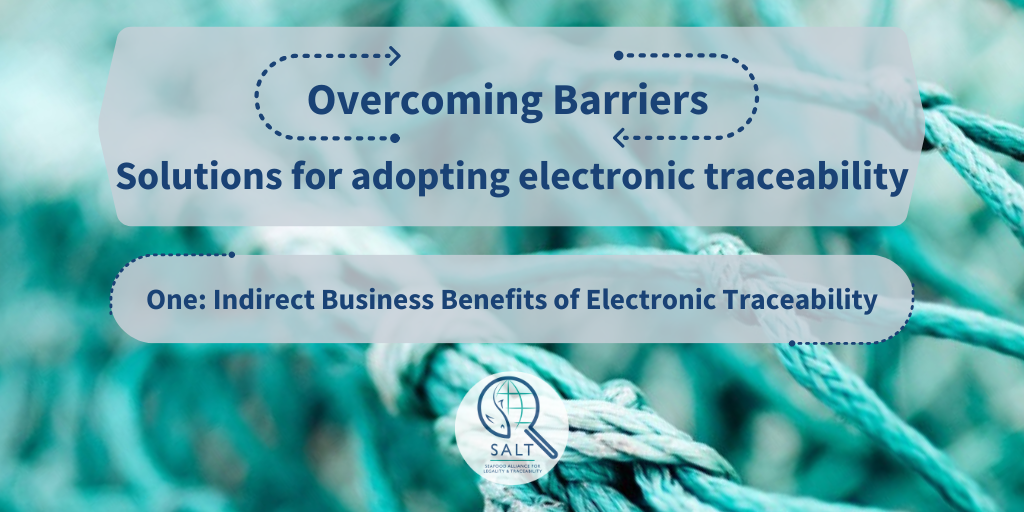
Chapter one in SALT's "Overcoming Barriers" series on adopting electronic traceability
Indirect Business Benefits of Electronic Traceability
Introduction
The global nature of the seafood trade, coupled with the fact that many high-value species are captured far from shore, has enabled the proliferation of illegal, unreported, and unregulated (IUU) fishing. IUU fishing damages fish stocks around the globe as illegal fishers plunder more than their fair share from our oceans. Additionally, illegal fishing practices can sometimes occur alongside human rights abuses, such as trapping workers on vessels at sea – either physically or through debt. But, the world is waking up to these injustices. Government import regulations are working to ensure illegal products don’t enter their national markets, media are exposing egregious practices, and some consumers are voicing their preference for certified and sustainably harvested fish1.
Keeping up with increasing consumer demand and strengthening regulations for sustainable seafood is difficult for the seafood industry. Often, companies in seafood supply chains find themselves burdened by antiquated, paper-based means of collecting, storing, and transferring information about their products to supply chain partners, which can bar them from joining the rest of the modern global market. Substituting paper-based methods for digital and electronic recordkeeping can help industry pace themselves with market developments. The Seafood Alliance for Legality & Traceability (SALT) is here to share experiences, amplify resources, and foster collaboration to help with this process.
Transitioning from paper-based methods to electronic logging and reporting is not easy. In fact, the process can be riddled with intimidating barriers and challenges. Thankfully, companies deliberating making the switch now are not the first companies to undergo this conversion. The trailblazers who have piloted electronic traceability, along with their NGO partners, have written case studies, described solutions that helped them overcome obstacles, and created tools to make the process easier for others. Here, SALT has distilled this information to walk the seafood industry through the barriers to adopting electronic traceability and provide potential solutions to overcoming the challenges a company might face.
This blog is the first in the series – “Overcoming Barriers: Solutions for adopting electronic traceability”. This series primarily speaks to the seafood industry and covers barriers such as prohibitive cost and unclear benefits, interoperability, behavior change, and technology issues, as well as providing a range of solutions.
To read the rest of the blog, you can find it here:


